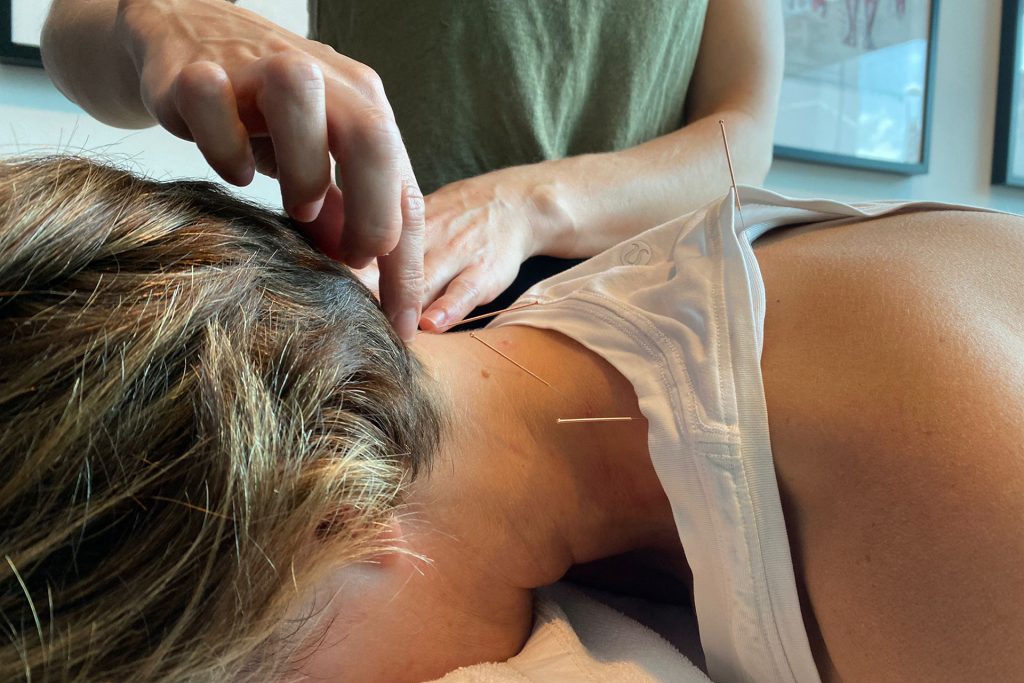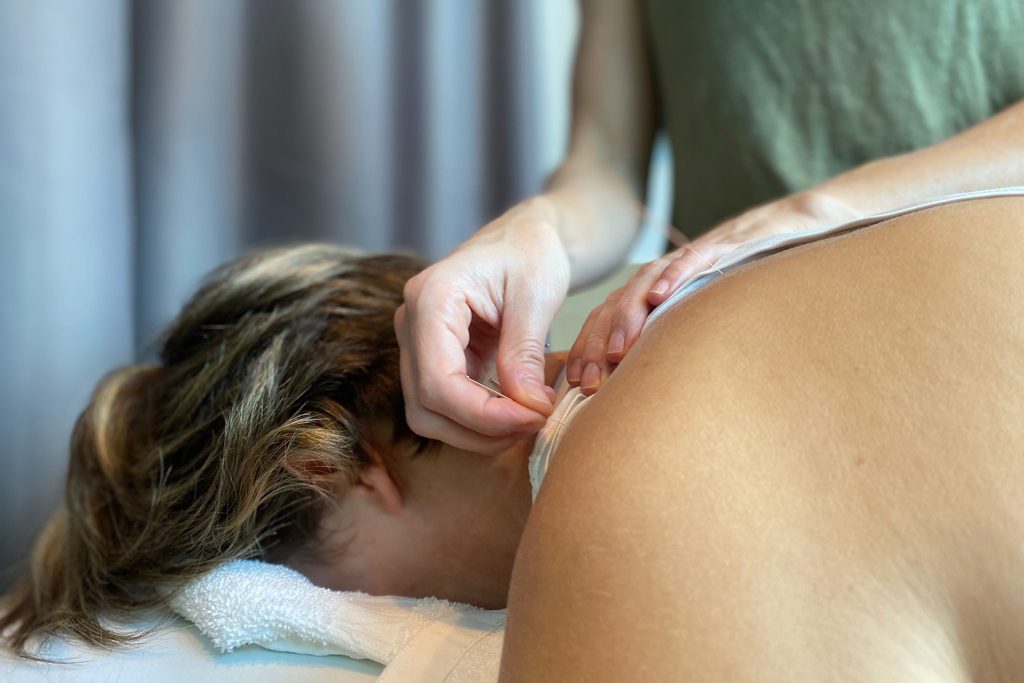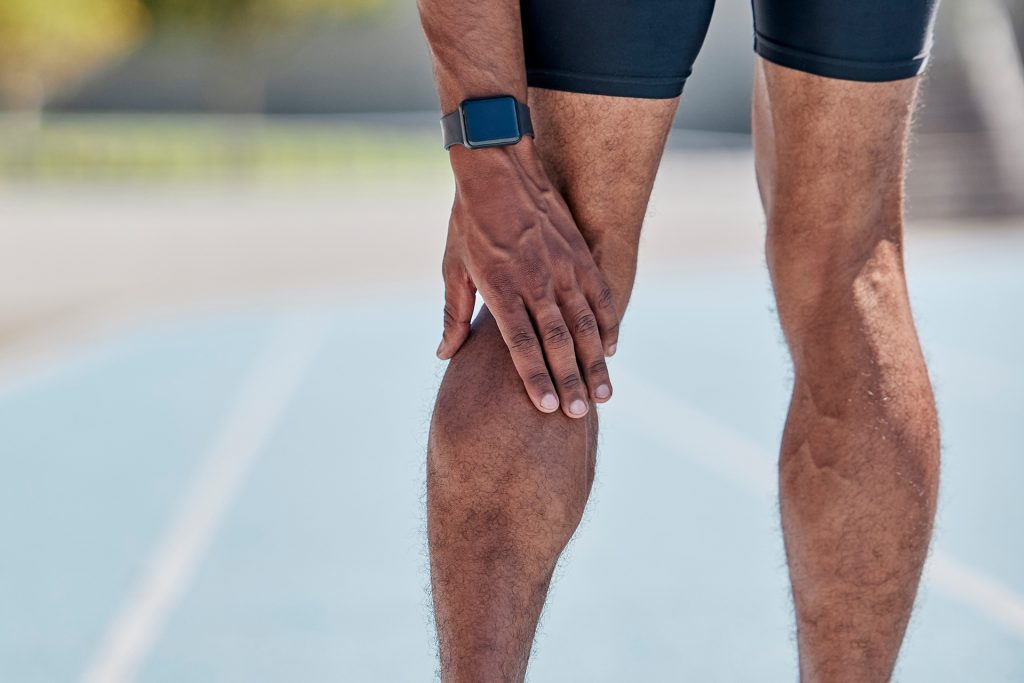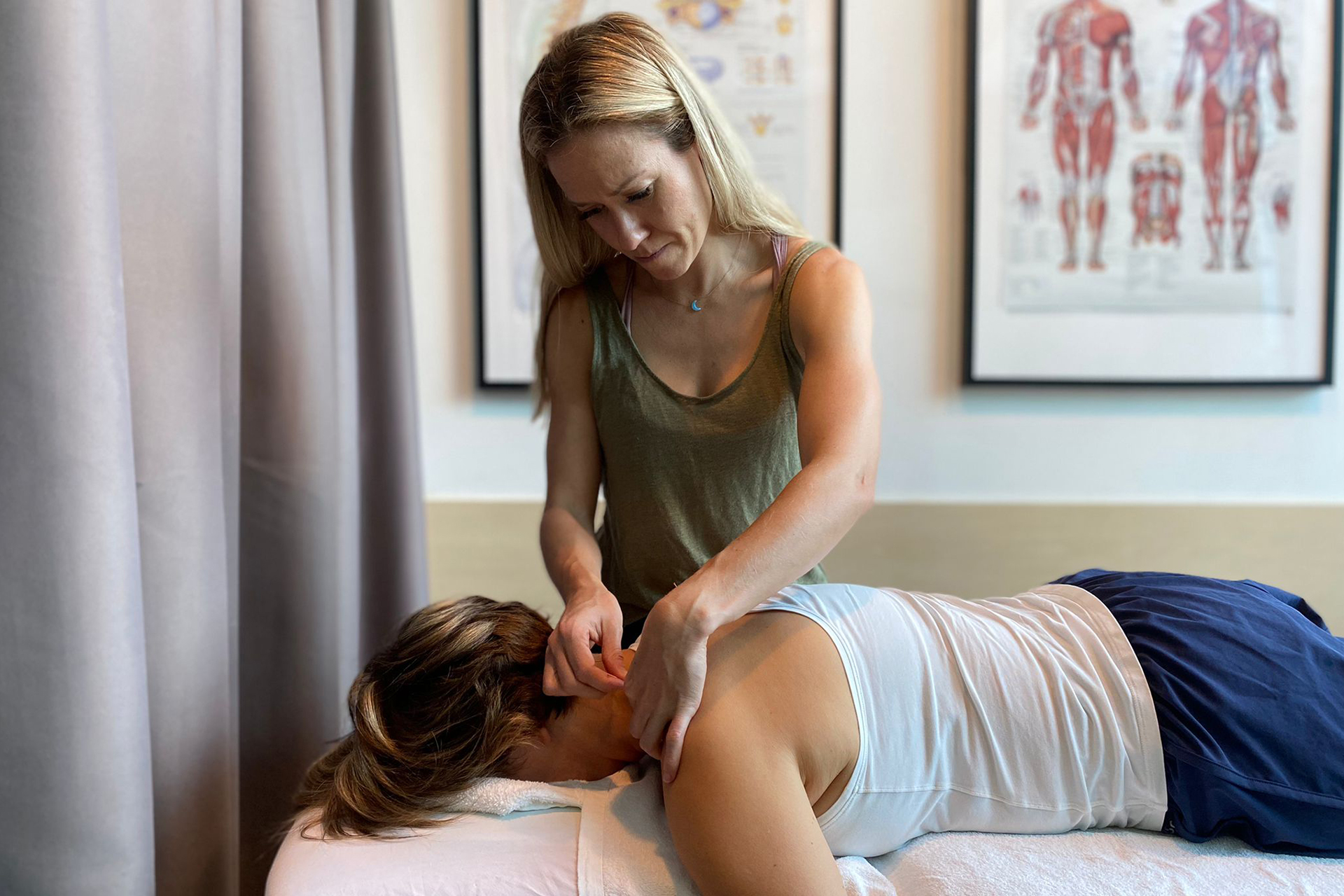What Is Dry Needling?
Dry needling in physiotherapy is a minimally-invasive treatment that reduces inflammation and relieves tightness in muscles.
Dry needling goes beyond traditional acupuncture approaches, by targeting muscle trigger points that contribute to your problem or discomfort. Using needles, we target myofascial trigger points, which are hyper-irritable regions of muscle with soreness caused by persistent inflammation or restricted range of motion. These trigger points, if left untended, can result in chronic pain or further restrict your mobility.
These points are located in tight bands of skeletal muscle or fascia. A knot in a muscle, or capsulitis, is one of the most common sources of pain that restricts the full range of movement. In fact, recent medical insights have uncovered how fascia, a long-overlooked tissue, can actually shape your overall health.
Muscle overuse is believed to contribute to the activation or exacerbation of existing trigger points within the body. One common condition associated with muscle pain is myofascial pain syndrome. In clinical practice, dry needling is used to promote healing by creating small microtears in muscles, which stimulates a controlled inflammatory response.
Dry Needling Treatment Modality
Recent research has shed light on the significance of fascia, the connective tissue enveloping muscles and organs, which was previously overlooked. These new insights highlight its pivotal role in addressing chronic pain and immune dysfunction, presenting a potential key to effectively managing these conditions.
Research also suggests a possible link between injuries, posture, stress and their potential influence on muscular and fascial tissues, which may impact mobility. These new insights highlight the significance of addressing fascial health in managing chronic pain and promoting overall well-being.
Physiotherapists incorporate dry needling as a therapeutic technique. Due to the accumulation of ongoing tension and strained muscles, joints may become stiff, restrict motion, or cause pain.

Deep dry needling involves a sterile, thin monofilament needle that is inserted through the skin, subcutaneously to stimulate myofascial tissues that may not be easily accessed through other techniques, such as sports massage therapy. This minimally-invasive approach specifically targets the fascia to promote myofascial release, resulting in pain relief and improved range of motion.
Dry Needling Benefits for Myofascial Release
Myofascial pain is a significant medical condition that can cause substantial discomfort and disability. Due to the complexity of diagnosis, the condition can be challenging for healthcare providers to accurately identify the condition. With proper diagnosis, physiotherapists can provide effective treatment and support to patients experiencing ongoing pain. Through their specialized knowledge and expertise, physiotherapists play a crucial role in recognizing and addressing myofascial conditions.
Dry needling, a technique used by physiotherapists, stimulates the body’s natural healing mechanisms, aiming to reduce pain and promote the release of natural fluids for pain relief. As muscle pain diminishes, patients experience improved mobility as stiffness and discomfort subside. Dry needling allows individuals to perform daily activities while their body is healing, minimizing persistent pain.
The Difference Between Dry Needling and Acupuncture
Dry needling is a technique used by trained physiotherapists to address acute or chronic pain in specific muscle groups. Unlike acupuncture, which follows meridian lines, dry needling targets trigger points within tight bands of skeletal muscle.

When tissue is damaged or irritated, muscles contract, restricting blood flow to the injured area and exacerbating the condition. During a dry needling treatment session, a thin monofilament needle is inserted into the muscle at the site of injury, prompting a healing response and relieving muscle contraction.
By creating microtears, the needle stimulates the body’s natural immune response, increasing blood flow and delivering essential nutrients to promote tissue repair. Additionally, dry needling can help disperse inflammatory mediators that often accumulate in inflamed areas.
Dry needling differs from acupuncture in its focus on specific muscle groups and trigger points, aiming to provide targeted pain relief and improve overall function. It is an effective technique used by physiotherapists to address musculoskeletal pain and facilitate the body’s natural healing processes.
Effective Treatment in Reducing Osteoarthritic Pain
In patients with osteoarthritis, joint stiffness and discomfort are common due to the gradual wearing down of cartilage surrounding the affected areas, often caused by overuse or simple aging. As cartilage deteriorates, increased friction leads to pain during basic joint movements, particularly in the hands, knees and hips, making even the most basic movement of walking a challenge.
Dry needling can effectively target these specific areas, triggering the body’s natural healing response. Using dry needling brings fresh oxygen and nutrients to the tissues while removing waste products and toxins. Improved blood flow also supports tissue repair and aids in the removal of metabolic byproducts.
During tissue metabolism and normal physiological processes, byproducts such as carbon dioxide, lactic acid, and other metabolic waste products can accumulate in the tissues. These substances are typically cleared from the body through the lymphatic and circulatory systems. When it comes to myofascial release, the improved blood flow and tissue mobilization associated with the technique can aid in the removal of these byproducts.

For some patients, dry needling may serve as an alternative or complementary approach to pain relief medications, providing joint discomfort relief. It can be a valuable tool to manage pain while simultaneously incorporating other techniques to slow the progression of osteoarthritis.
Benefits of Dry Needling for Enhanced Sports Performance for Runners
Dry needling is a beneficial technique used by physiotherapists to facilitate the healing process and expedite recovery for athletes experiencing muscle soreness and tension. Intense training and repetitive stress can lead to muscle tightness and the formation of knots in the fascia.
Dry needling proves effective in addressing these issues, making it particularly advantageous for runners aiming to alleviate muscle tightness or recover from injuries.

Here are three prevalent running conditions where dry needling can provide assistance:
- Plantar fasciitis is a condition where the web of tissue running underneath your foot becomes inflamed, creating pain with each step, especially in the morning as the body warms up. Dry needling can redirect the body’s healing fluids toward the foot, reducing the inflammation.
- Medial tibial stress syndrome, also known as shin splints, occurs when running due to the overuse or misuse of the leg leads to recurring pain in the calf. Dry needling can help the muscles relax, easing the pain. This needs to be coupled with proper rest though, as shin splints will only grow worse without it.
- Achilles tendinopathy, or Achilles tendinitis, is an injury in the back of the foot, connecting the heel to the rest of the leg. Common symptoms are stiffness and pain in the tendon, both of which can be treated with dry-needling techniques.
In combination with other physiotherapy treatments and interventions, dry needling can alleviate painful musculoskeletal conditions to restore you to pain-free movement, increase your range of motion, and improve the tissue healing response.
If you are suffering from intramuscular pain or a chronic pain condition that is showing little relief with other forms of therapy, then discuss dry needling with our physiotherapy team. Conditions that we often treat with dry needling at HelloPhysio include back or neck pain, tennis elbow, joint problems, myofascial pain, pelvic pain, plantar fasciitis, shin splints, shoulder impingement and tendonitis.

